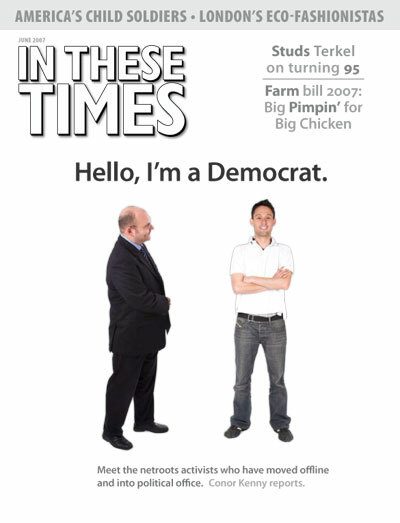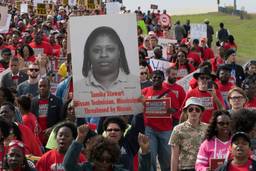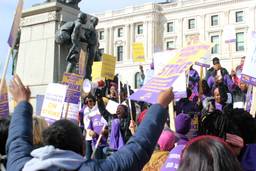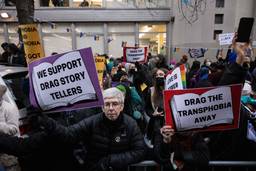Chicago Unions Flex Political Muscle
Instead of fighting Mayor Daley, labor movement goes after his aldermen pawns
David Moberg

Frustrated with city hall’s tilt to a business elite, Chicago’s labor unions decided to send Mayor Richard M. Daley a message: The “city that works” doesn’t work for working families. In the February and April elections, the labor movement broke with the city’s fabled but feeble Democratic machine, and helped oust key Daley allies and elect seven new members to the 50-seat city council.
Despite scandals engulfing his top aides, the mayor easily won his sixth term in February against weak opponents. But the Chicago Federation of Labor (CFL) – for decades a pillar of the city’s machine politics – did not endorse Daley (although the building trades did). Instead, unions spent roughly $3 million and fielded a political operation stronger than Daley’s that backed challengers to the mayor’s council allies.
They targeted aldermen who had opposed labor objectives, such as a living wage for “big box” retail workers. Although the council passed the ordinance last year, several aldermen later switched votes, dooming the effort to override Daley’s veto. In 2004 the council had also split over Wal-Mart’s request, supported by Daley, to build two stores in Chicago, one of which was narrowly approved.
In the council debates about Wal-Mart and the living wage standard, black council members split into a pro-labor faction and a faction that attacked unions as racist enemies of the black community. Black council members targeted by labor in this year’s elections continued their race-baiting attacks, even though the most politically active unions, such as the Service Employees (SEIU) and the American Federation of State, County, and Municipal Employees (AFSCME), have a majority black membership in Chicago.
Most unions regarded the battle over the big box ordinance as a symptom of the new class-based divide in Chicago politics, but not the crux of their dispute with Daley. “It became symbolic of the city’s relationship to the labor movement,” says John Cameron, political director for AFSCME District Council 31, “to the extent that it refocused city politics around class, wages and jobs instead of race and ethnicity issues, which have always been the historic conversation, or ‘independent’ versus ‘machine’ politics, when independent didn’t necessarily mean pro-labor. For the first time I can remember, we had a city election about class.”
“The press wants to make it about big box,” says SEIU State Political Director Jerry Morrison, “but this is about a larger agenda, about SEIU and the rest of the labor movement building independent political power.” Unions began planning their challenge to Daley’s allies long before the big box vote, and they have goals far beyond challenging Wal-Mart.
Chicago’s economy has been relatively strong under Daley, who has promoted the city as a global hub for business services, rather than the city of big shoulders as it once was known. New apartment towers flourish around the downtown, and gentrification has spread into working-class neighborhoods. Daley lavished subsidies on business through tax increment financing districts that were intended to revive blighted neighborhoods but which have mainly benefited already dynamic Loop locations, depriving local government of desperately needed taxes in the process.
The mayor – typically with city council support – refused to aid key organizing drives at the city’s major hospital chains, failed to support hotel workers now on strike for nearly four years at the Congress Hotel, dragged out city worker contract negotiations, and pushed privatization of city services and properties.
“It will be good to have a more independent council,” says SEIU Illinois Council President Tom Balanoff. “We sensitized the aldermen to working family issues. Equally important, labor has established its independence from many of the city’s political fiefdoms. Now the challenge is to figure out how to use the new-found power, or perception of it, for working families.”
A potential new labor/reform council bloc would not have a majority but would roughly double its previous size. Labor and its community allies have no settled agenda but are likely to push for strong affordable housing legislation, reforms of tax increment financing and a new living wage bill. Reformers may also pursue ethics reform and the creation of a civilian police review board.
Overall, University of Illinois at Chicago political science professor Dick Simpson says, the new council bloc will be pushing a “working-class, middle-class agenda, as opposed to the global economy tilt of the Daley administration.”
Having broken loose from its self-imposed shackles to the Daley machine, Chicago labor unions say they will escalate their fight in the council and in elections to come. After a long detour through machine politics, Chicago may be returning to a version of the labor politics that made it famous more than a century ago.
David Moberg, a former senior editor of In These Times, was on staff with the magazine from when it began publishing in 1976 until his passing in July 2022. Before joining In These Times, he completed his work for a Ph.D. in anthropology at the University of Chicago and worked for Newsweek. He received fellowships from the John D. and Catherine T. MacArthur Foundation and the Nation Institute for research on the new global economy.









